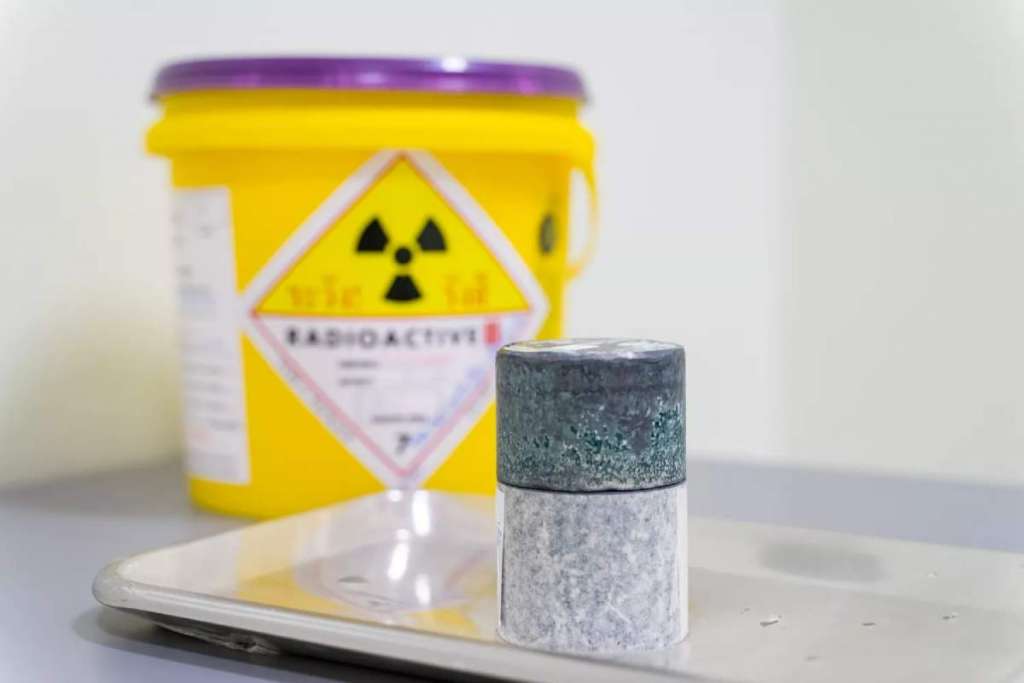There is big news occurring in Thailand right now as we speak, the Caesium-137 (Cs-137) was stolen and a piece of it has already been melted accidentally. The panic spread all over the country as some scientists say the radiation could affect as wide as a 1,000 km of radius.
Cs-137 is a radioactive isotope of the element caesium. It is produced through the nuclear fission of uranium and plutonium in nuclear reactors and nuclear weapons, as well as during nuclear accidents, such as the Chernobyl disaster in 1986.
The isotope emits beta particles and gamma rays, which can be harmful to living organisms. It has a half-life of about 30 years.
So, now we know that the element has a half-life of 30 years, but why do we estimate it as a ‘half-life’ and not ‘fully decay to non-radioactive’? And how can we calculate it? Did we observe it for 30 years to finally acknowledge it? Let’s find out!
What is the half-life concept in radioactive isotopes?
The reason why scientists use the concept of “half-life” when describing the decay of radioactive isotopes is that radioactive decay is a probabilistic process. It is impossible to predict precisely when a single atom will decay, but it is possible to make accurate predictions about large numbers of atoms.
The half-life of a radioactive isotope is defined as the amount of time it takes for half of the radioactive atoms in a sample to decay into non-radioactive isotopes. This means that after one half-life has elapsed, half of the original radioactive atoms have decayed, while the other half remains radioactive.

Iodine 131 (I-131), a radioactive isotope used for hyperthyroidism treatment, has a half-life of 8 days
By using the concept of half-life, scientists can predict how much of a radioactive isotope will remain after a certain amount of time has passed. For example, if the half-life of a radioactive isotope is 30 years, then after 30 years, half of the original amount will remain. After 60 years, only one-quarter of the original amount will remain, and so on.
It is not possible for a radioactive isotope to become fully non-radioactive in a finite amount of time because the process of radioactive decay is continuous and ongoing. However, after a sufficiently long time has passed, the amount of the radioactive isotope will become so small that it can be considered effectively non-radioactive for practical purposes.
How can we estimate the half-life of an element? Only by observing?
The half-life of an element can be estimated through various methods, including observation, measurement, and calculation.
One of the most common methods of measuring the half-life of a radioactive isotope is to measure the decay of a sample of the isotope over time. By measuring the amount of radioactive isotope remaining in the sample at different intervals, scientists can calculate the half-life of the isotope.
Another method is to use theoretical models based on the properties of the atomic nucleus, such as the number of protons and neutrons, to predict the half-life of a radioactive isotope. These calculations can be used to estimate the half-life of an isotope before it has even been synthesised.
In some cases, the half-life of a radioactive isotope can also be inferred from other measurements, such as the energy spectrum of the radiation emitted during decay.
It is important to note that the accuracy of these methods can vary depending on the specific isotope and the conditions in which it is measured or calculated. In addition, experimental and observational uncertainties can also affect the accuracy of the estimated half-life. Therefore, it is often necessary to use multiple methods and compare results in order to obtain a more accurate estimate of an isotope’s half-life.

Radiation protector suit
How can radiation affect our bodies?
We all know that we shouldn’t be near anything radioactive because it’s dangerous, but why is radiation dangerous to us, to our bodies?
That is because radiation can cause mutations in organic cells as it damages the DNA molecules within the cells. DNA contains the genetic information that determines the characteristics of an organism, and mutations in DNA can lead to changes in these characteristics.
Radiation can cause DNA damage in a number of ways. For example, it can ionise atoms within the DNA molecule, creating free radicals that can react with and damage the DNA. It can also break the chemical bonds that hold the DNA molecule together, causing the molecule to fragment.
When DNA damage occurs, the cell’s natural repair mechanisms will attempt to fix the damage. However, if the damage is severe or the repair mechanisms are overwhelmed, the DNA may not be repaired correctly, leading to mutations.
Mutations can have a wide range of effects on cells, from minor changes to the DNA sequence to more significant alterations that can affect the cell’s function or even lead to cancer. In some cases, mutations may be beneficial, allowing cells to adapt to changing environments or acquire new functions. However, in most cases, mutations are harmful and can cause genetic disorders, developmental abnormalities, or other health problems.
Therefore, it is important to limit exposure to radiation as much as possible, particularly ionising radiation, which has the greatest potential to cause DNA damage and mutations. This is why radiation safety measures and guidelines are in place to protect individuals from unnecessary exposure to radiation.
What are the benefits of each radiation, why is it widely used in today’s world?
At some point of time, you might be curious yourself that if the radiation or radioactive element is so dangerous, why is it still widely used in today’s world, then? Well, just like electricity or any chemical element, each type of radiation has its own benefits and uses. Such as;

Radioactive Scans by Gamma-ray and X-rays
- Gamma rays and X-rays: These types of radiation are commonly used in medical imaging, such as X-ray machines and CT scans, to diagnose medical conditions and injuries. They are also used in radiation therapy to treat cancer by targeting and killing cancer cells.
- Alpha particles: These particles are used in smoke detectors, as they can ionise air particles and produce an electrical current that can trigger an alarm.
- Beta particles: These particles can be used to treat certain medical conditions, such as eye tumours and skin cancer, by targeting and killing cancer cells.
- Neutron radiation: Neutron radiation is used in a variety of applications, such as materials testing and nuclear power generation.
While radiation has many beneficial uses, it is important to note that exposure to radiation can also have harmful effects on human health. Exposure to ionising radiation can increase the risk of cancer, genetic mutations, and other health problems. Therefore, it is important to limit exposure to radiation as much as possible and to follow radiation safety guidelines and regulations when working with sources of radiation.
In conclusion
The recent theft of Caesium-137 in Thailand is a stark reminder of the dangers of radioactive isotopes and the importance of understanding their properties. The panic that has spread across the country is a clear indication of the fear that comes with exposure to radiation, and it’s crucial that we take steps to protect ourselves and our environment from this potentially deadly substance.
Radioactive isotopes, such as Caesium-137, emit beta particles and gamma rays that can cause severe harm to living organisms, including humans. These particles can cause mutations in organic cells, which can lead to changes in an organism’s characteristics and even cancer.
While the benefits of radiation are clear, we must be cautious and ensure that we handle these isotopes with the utmost care and responsibility. The consequences of mishandling them can be catastrophic, as we have seen in the case of the stolen Caesium-137 in Thailand.









